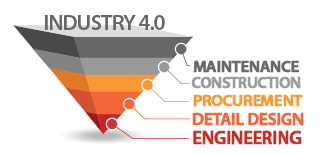
The business world is uncertain about the differences between business strategy and model. The latter is relatively new and not well understood. So I have some freedom to explain both in my own way.
A business model is part of the strategy that is slow in change and visible to everybody. Unlike strategy, the model does not contain any know-how or trade secrets - a recipe for how a company creates and sustains a competitive business.
If a company is described as the EPC contractor for municipal and industrial wastewater treatment based on reverse osmosis technology, its business model is providing engineering services in water treatment. The combination of reverse osmosis, industry, contract type, and size relates to the company strategy.
For desalination companies engaged in EPC projects, the business model invariably includes domain-specific knowledge of engineering, procurement, and management. It is much wider than desalination. To make money, knowledge shall be packed into a "desalination box" carefully sized by the current strategy. In practice this deceptively simple tandem of model and strategy does not work as expected: over 30% of megaprojects result in losses. This together with long delivery times and lack of business scale on demand make the revenue stream unpredictable.
The second ingredient of the EPC business model is operation and maintenance (O&M) services. Long-term service contracts generate a stable revenue stream and make the business sustainable.
If O&M is so appealing, why not make it a core business? Some companies tried to do this and failed. The lesson learned is that companies may serve only the plants they build.
The above engineer-operate-centered business model is far from perfect; it does not meet the customer's requirements regarding business transparency, speed, and quality.
As this model is not affected by software tools for 3D modeling, PLM, or project management, most EPC companies believe digitization is a means of business enhancement, not disruption.
To understand the consequences of digitization, let's start with a case of the digital framework for engineering calculations. In its classic version, it includes the web interface for data input and output, a processor, and a database.
This framework moves calculations from the office to the internet and makes engineers redundant. The most remarkable thing is that it may be rented to other companies performing the same routine calculations. As more companies become connected to this new service, the digital framework turns into a virtual business consolidation (VBC) platform performing not only calculations but generating firm quotes, processing feedback, and tracking customers' experiences.
Digitization is a synonym for virtual business consolidation.
Consolidation is considered the strongest element of any business model as it positions the business above the competition and leads to business globalization.
Virtual consolidation transcends physical one exemplified by such companies as SUEZ, Evoqua, Gradiant, or Fluence. They may be re-consolidated again in many ways as virtual consolidation is infinite.
Described above consolidation is horizontal - it deals with identical businesses. The EPC business is additionally subject to vertical consolidation covering dissimilar but interrelated ones.
The overturned pyramid above illustrates the EPC complexity – each next business layer up has a higher weight in the project-plant life cycle, but its success depends on the previous one.
Vertical consolidation means unrestricted automatic exchange of data between the business layers. Information becomes interoperable.
This consolidation type entirely changes the architecture of all the software tools targeting different EPC layers as it introduces a common database and removes the major point of these tools' failure – the data input. Instead, data streams from one layer to another.
While horizontal consolidation is bounded by known businesses, vertical consolidation initiates the creation of new software tools by providing access to data.
The VBC platform – the final destination of EPC digitization – becomes a mediator between designers, manufacturers, engineering consultants, O&M staff, and software developers serving a continuous stream of project-plant lifecycles.
